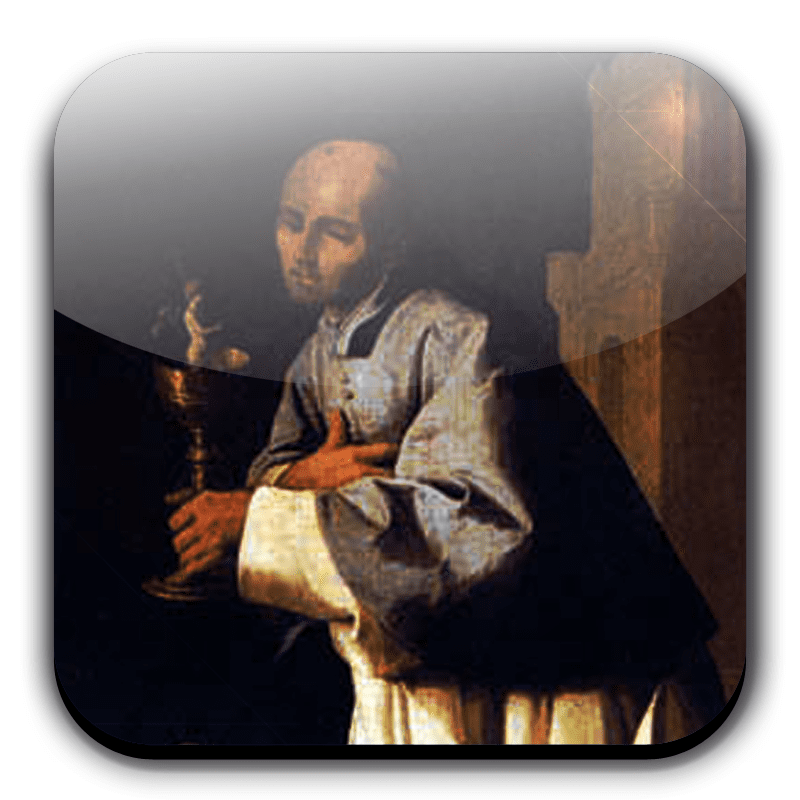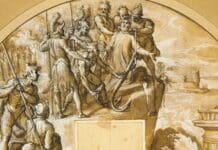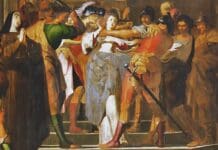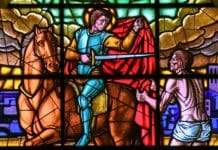St. Hugh of Lincoln was the son of William, Lord of Avalon. He was born at Avalon Castle in Burgundy and was raised and educated at a convent at Villard-Benoit after his mother died when he was eight. He was professed at fifteen, ordained a deacon at nineteen, and was made prior of a monastery at Saint-Maxim. While visiting the Grande Chartreuse with his prior in 1160. It was then he decided to become a Carthusian there and was ordained. After ten years, he was named procurator and in 1175 became Abbot of the first Carthusian monastery in England. This had been built by King Henry II as part of his penance for the murder of Thomas Becket.
His reputation for holiness and sanctity spread all over England and attracted many to the monastery. He admonished Henry for keeping Sees vacant to enrich the royal coffers. Income from the vacant Sees went to the royal treasury. He was then named bishop of the eighteen year old vacant See of Lincoln in 1186 – a post he accepted only when ordered to do so by the prior of the Grande Chartreuse. Hugh quickly restored clerical discipline, labored to restore religion to the diocese, and became known for his wisdom and justice.
He was one of the leaders in denouncing the persecution of the Jews that swept England, 1190-91, repeatedly facing down armed mobs and making them release their victims. He went on a diplomatic mission to France for King John in 1199, visiting the Grande Chartreuse, Cluny, and Citeaux, and returned from the trip in poor health. A few months later, while attending a national council in London, he was stricken and died two months later at the Old Temple in London on November 16. He was canonized twenty years later, in 1220, the first Carthusian to be so honored.
Hugh of Lincoln was the son of William, Lord of Avalon. He was born at Avalon Castle in Burgundy and was raised and educated at a convent at Villard-Benoit after his mother died when he was eight. He was professed at fifteen, ordained a deacon at nineteen, and was made prior of a monastery at Saint-Maxim. While visiting the Grande Chartreuse with his prior in 1160. It was then he decided to become a Carthusian there and was ordained. After ten years, he was named procurator and in 1175 became Abbot of the first Carthusian monastery in England. This had been built by King Henry II as part of his penance for the murder of Thomas Becket.
His reputation for holiness and sanctity spread all over England and attracted many to the monastery. He admonished Henry for keeping Sees vacant to enrich the royal coffers. Income from the vacant Sees went to the royal treasury. He was then named bishop of the eighteen year old vacant See of Lincoln in 1186 – a post he accepted only when ordered to do so by the prior of the Grande Chartreuse. Hugh quickly restored clerical discipline, labored to restore religion to the diocese, and became known for his wisdom and justice.
He was one of the leaders in denouncing the persecution of the Jews that swept England, 1190-91, repeatedly facing down armed mobs and making them release their victims. He went on a diplomatic mission to France for King John in 1199, visiting the Grande Chartreuse, Cluny, and Citeaux, and returned from the trip in poor health. A few months later, while attending a national council in London, he was stricken and died two months later at the Old Temple in London on November 16. He was canonized twenty years later, in 1220, the first Carthusian to be so honored.

















